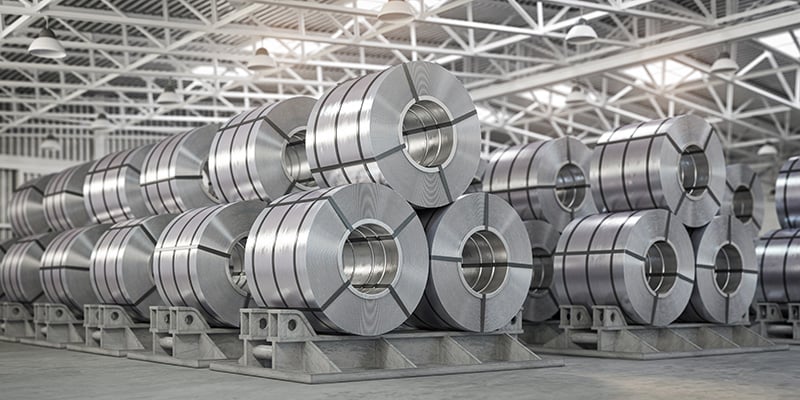Metallic May: Industrial Metal Packaging Solutions Redefined
Metallic May: Industrial Metal Packaging Solutions Redefined
Blog Article
Reliable Industrial Recycling Solutions for Sustainable Packaging: A Comprehensive Guide
In today's progressively environmentally-conscious world, the need for lasting packaging options has never been greater. To meet this need, organizations across industries are actively seeking reliable industrial recycling services. Browsing the complicated landscape of sustainable product packaging can be testing without an extensive overview. That's where this detailed overview on effective industrial recycling solutions for lasting product packaging can be found in. By exploring essential areas such as product packaging product option, making for recyclability, implementing recycling framework, teaming up with reusing companions, and tracking and gauging reusing success, this overview will outfit you with the expertise and devices necessary to make informed choices and drive favorable modification within your organization. Whether you're a product packaging professional, sustainability supervisor, or merely thinking about the topic, this guide will certainly provide beneficial understandings and techniques to assist you navigate the globe of sustainable product packaging.
Packaging Product Option
The choice of packaging materials plays a critical function in guaranteeing the sustainability of commercial reusing remedies. When it concerns lasting packaging, the choice of products is vital in lessening ecological impact and maximizing recycling efficiency. Choosing the best materials can help in reducing waste generation, conserve sources, and advertise a round economic climate.
Products like cardboard, paper, glass, and certain types of plastics can be reused multiple times without shedding their quality. On the various other hand, materials that are hard to recycle, such as combined plastics or non-recyclable composites, can create obstacles for the recycling procedure and may finish up in incinerators or landfills.
One more factor to consider is the use of renewable and naturally degradable materials. Product packaging made from renewable energies, such as plant-based plastics or biopolymers, can assist minimize dependence on fossil fuels and alleviate climate change. Additionally, biodegradable products break down naturally gradually, reducing the accumulation of waste in landfills.
Moreover, the weight and volume of product packaging products need to be decreased to lower transport expenses and power consumption. Light-weight products not just call for less sources throughout production but also add to lower carbon discharges during transportation.
Designing for Recyclability
Product packaging developers ought to prioritize the use of materials that are extensively accepted for recycling and have developed reusing facilities. Materials such as glass, aluminum, and specific kinds of plastic, like Pet dog and HDPE, are generally recycled and need to be chosen over materials that are expensive or difficult to recycle.
An additional crucial consideration in making for recyclability is the removal of unneeded parts or materials. By lessening the variety of layers, finishes, and extra parts, product packaging can be made simpler and simpler to recycle. In addition, developers must intend to minimize making use of combined materials, as they can complicate the recycling process.

Implementing Recycling Framework
Effective implementation of reusing facilities is crucial for the success of industrial reusing options. Without proper facilities in area, the recycling procedure comes to be ineffective and inefficient, preventing the general objective of lasting product packaging.
To implement reusing infrastructure properly, several essential elements need to be thought check that about. First of all, there ought to be a well-organized collection system that assists in the separation and collection of recyclable products. This can include designated recycling containers in public spaces, in addition to partnerships with waste administration firms for curbside pickup and sorting.
Once gathered, the recyclable products require to be transferred to recycling facilities in a timely way. This calls for reliable logistics and transportation networks, guaranteeing that the materials reach the suitable facilities immediately.
At the recycling centers, progressed sorting and handling technologies need to remain in area to divide various kinds of products properly. This consists of using automated arranging machines, optical scanners, and manual sorting techniques.
Additionally, there need to be a robust market need for recycled products. This can be achieved through cooperations with producers and sectors that make use of recycled products in their production processes. Producing a secure market for recycled products incentivizes the reusing industry and promotes the round economic situation.
Teaming Up With Recycling Partners

One secret aspect of teaming up with reusing partners is the establishment of clear interaction networks. It is very important to establish open lines of interaction to promote the exchange of info, updates, and comments. This allows both parties to remain educated regarding the progress of reusing efforts and resolve any type of challenges or concerns that may arise.
Furthermore, collaboration can entail collaborations in making and applying recycling programs. Reusing partners can give useful insights and support in developing reliable collection systems and figuring out the most ideal recycling technologies. By functioning together, services and recycling companions can optimize the reusing procedure and lessen waste.
Furthermore, collaboration can prolong beyond the functional facets of reusing. It can also include campaigning for and education campaigns. By joining forces, organizations and recycling companions can elevate understanding check this site out about the importance of recycling and promote the adoption of sustainable product packaging techniques amongst consumers and other stakeholders.
Tracking and Measuring Recycling Success
To make sure the performance of commercial reusing remedies and the success of sustainable packaging goals, it is vital for businesses and their recycling partners to establish a comprehensive system for tracking and measuring recycling success (plastic container manufacturer). Tracking and measuring recycling success allows businesses to assess the impact of their recycling efforts, identify areas for improvement, and set meaningful targets for future progress
One way to track recycling success is through the use of information collection and evaluation tools. By collecting data on the quantity of product packaging waste created, the portion of waste that is reused, and the sorts of materials being recycled, businesses can obtain valuable insights right into their reusing efficiency. This data can then be analyzed to recognize fads, patterns, and locations of inadequacy.
One more essential element of tracking and gauging reusing success is establishing standard and clear metrics. This enables businesses to contrast their efficiency against sector criteria and track their progress over time. Metrics such as reusing rates, waste diversion rates, and greenhouse gas discharges can offer a quantitative action of a service's recycling success.

Final Thought
To conclude, implementing reliable industrial recycling solutions for lasting packaging requires cautious consideration of product packaging material option, developing for recyclability, implementing reusing infrastructure, teaming up with recycling companions, and tracking and measuring reusing success. By incorporating these techniques, businesses can contribute to an extra environmentally-friendly and lasting approach to product packaging, reducing waste and advertising the round economic climate.
By discovering crucial areas such as packaging material option, making for recyclability, carrying out recycling infrastructure, working together with reusing partners, and monitoring and measuring recycling success, this overview will outfit you with the knowledge and tools essential to make educated choices and drive positive change within your company. Packaging developers ought to focus on the use of materials that are extensively accepted for reusing and have developed reusing frameworks.Collaboration with recycling companions is essential for the effective implementation of industrial reusing options and the achievement of sustainable packaging goals. By signing up with pressures, companies and reusing companions can elevate awareness about the significance of recycling and promote the adoption of sustainable packaging methods among consumers and other stakeholders.
By gathering data on the amount of product packaging waste created, the percent of waste that is reused, and the types of materials being recycled, businesses can gain important insights into their recycling performance.
Report this page